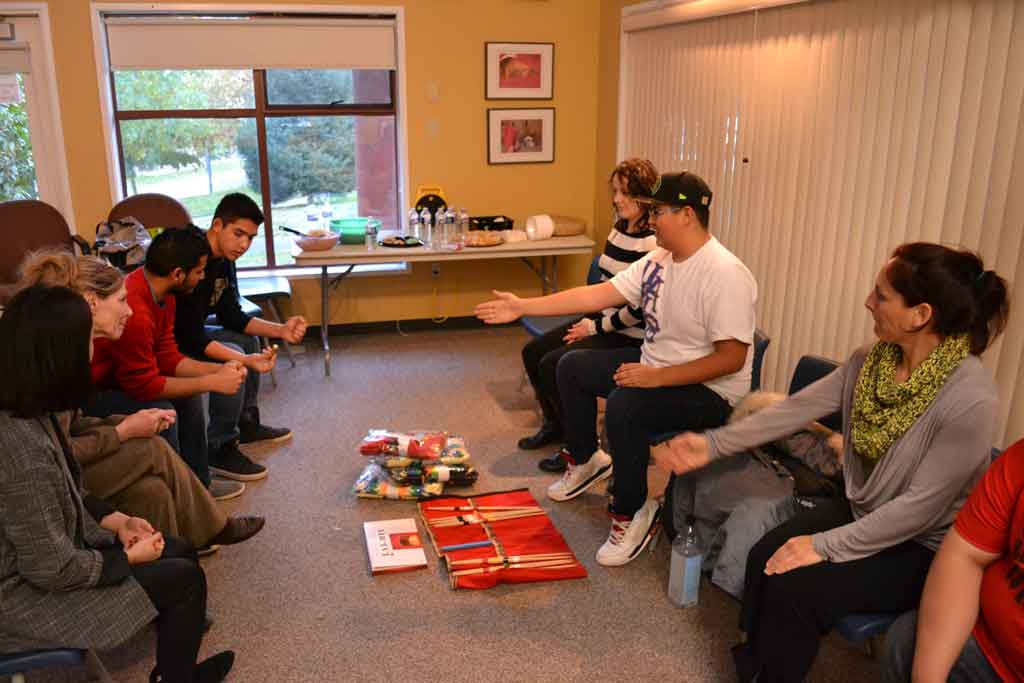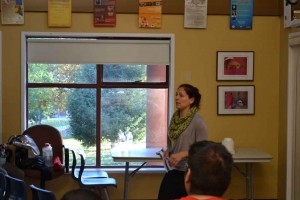By Simon Grant (Contributor/Photos) – Email
Print Edition: November 19, 2014

In conjunction with International Education Week and the Exploring Global Indigeneity series, UFV Talks presented Stó:lo Nation’s Spirit of Community youth group. Representative spoke on empowering aboriginal youth and on her work with Sto:lo nation’s aboriginal children.
“The most important thing necessary for a society to survive is its children,” Paul said. “Children are a precious gift, and what happens to kids is very important.” She believes the youth are a reflection of the health of a society, and wants to eliminate the term “youth at risk” because “all children are at risk as both parents have to work,” leaving the children unattended. She also noted social media has a huge impact on children’s mentalities.

Paul argued that in Western society, children are not valued the way they should be and youth are often put at the bottom of the priority list. She referred to a skewed idealism when adults and teachers often make the mistake of telling kids that life will be different in the “real world.” She wants adults and teachers to realize that children are in the real world from the moment they “enter the human realm, enter into a family, into the community, into the municipality, to the provinces, into a country.”
Paul also noted that while adults and teachers think they know best for a certain situation, when a connection is made between the older and younger demographics, an optimistic synergy is created. She wants to promote that synergy.
While she believes that children are not necessarily struggling, they need to be seen as “innovators, problem-solvers, and people.” She referred to Dr. Martin Brokenleg’s Circle of Courage, and the four things a child needs to survive: belonging to a group and the identity that is derived from belonging; opportunity to master skills learned from elders; the independence to take responsibility for their actions; and generosity to give what they learned and mastered to future generations. She concluded by saying she wanted youth to be given more ability to contribute to the community they are a part of.
The second half of the event was the playing of Slahal, put on by the Spirit of the Community Youth. Slahal is a very old game, played up the coast and into the interior of British Columbia and Washington. It was played before European colonization as a substitution for war. In the game, two sides compete for a desired object — traditionally hunting or fishing grounds, but in modern times for money. Two team members from one side hide a male piece (usually carved bone) in one hand, and a female piece in the other. The opposing side guesses for the female piece in each of the player’s hands. If the opposing team wins the guess, they receive a stick for each correct guess. The game is won when all 11 sticks are won by one team.

